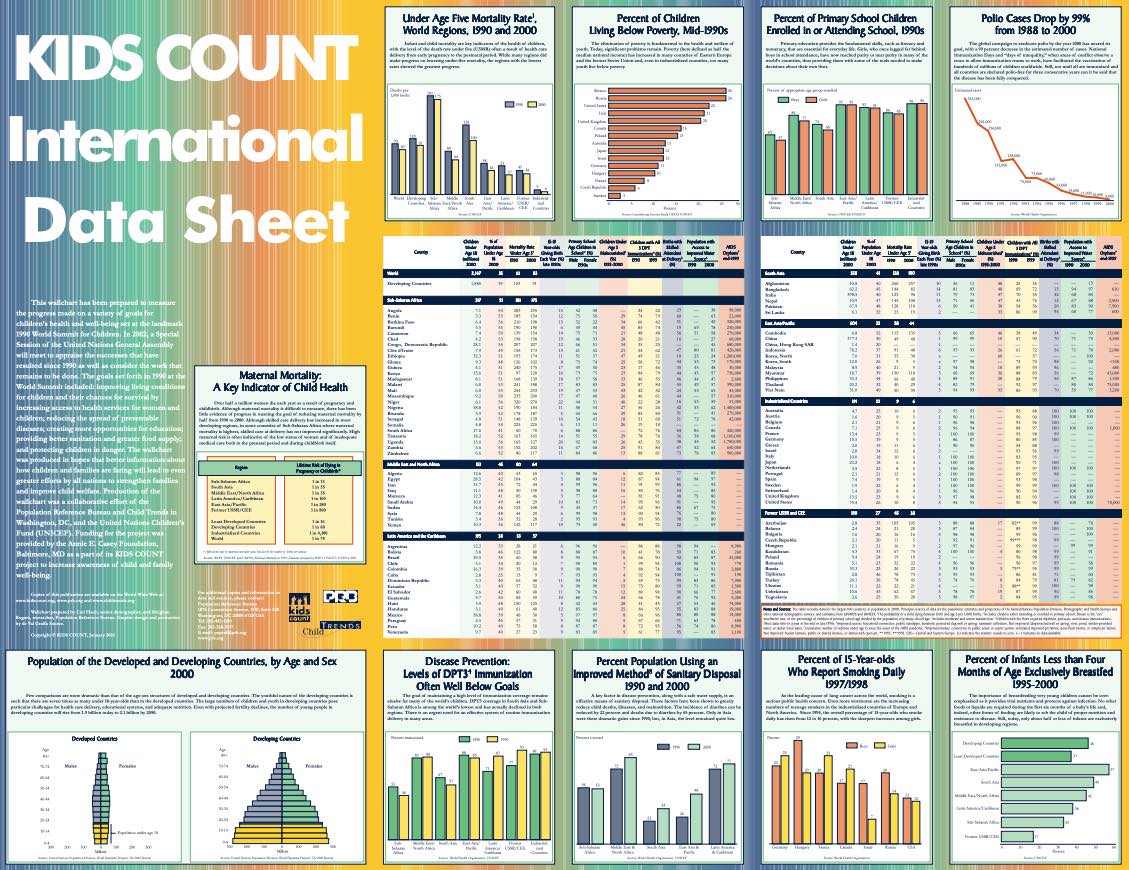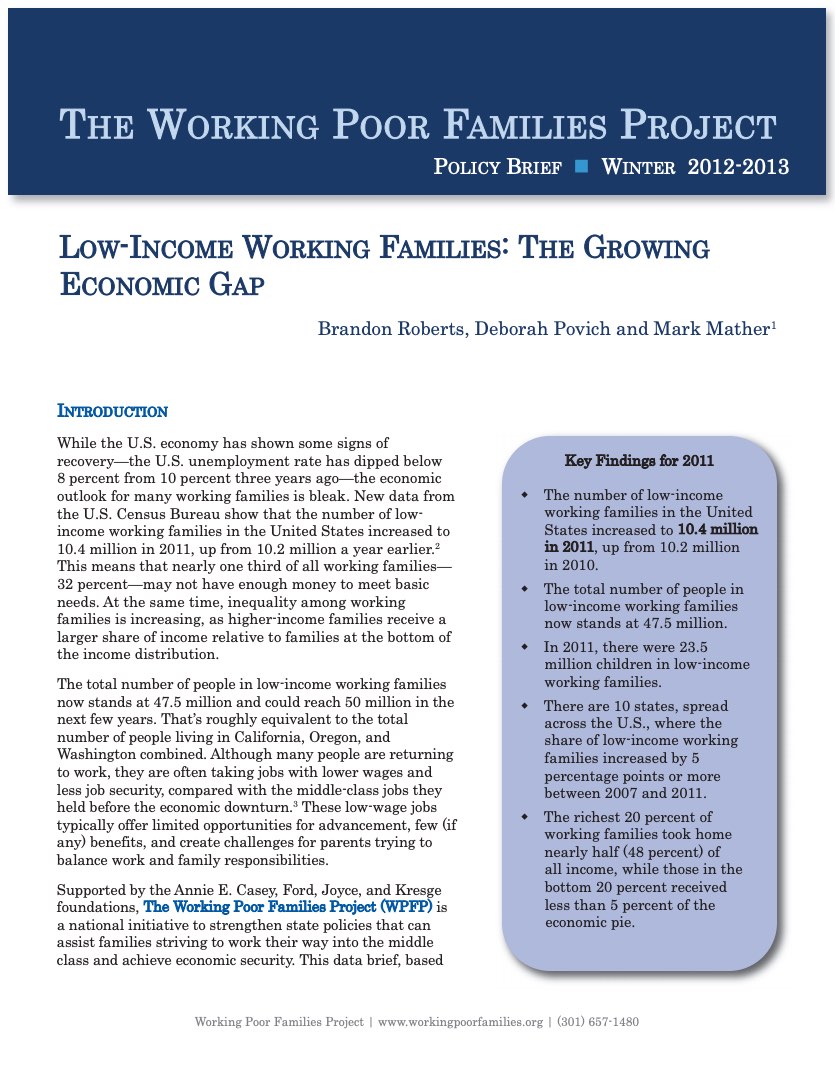175 Search Results Found For : "january-anma.shop"

Project: KIDS COUNT
KIDS COUNT International Data Sheet
(2002) The data in this data sheet dramatize the yawning gaps in well-being between children of rich and poor nations.
What You Need to Know About the 2010 U.S. Census
(2009) With one year to go before the 2010 U.S. Census, what measures are being taken to ensure that Americans participate? How will technology such as handheld GPS systems be used to gather data? Why is the census so important to foundations and nonprofits? What interests and concerns does Congress have?

Project: Working Poor Families Project
U.S. Low-Income Working Families Increasing
(2013) Economic security is out of reach for a growing number of working families in the United States, according to a new analysis of 2011 data from the U.S. Census Bureau's American Community Survey. The number of low-income working families rose from 10.2 million in 2010 to 10.4 million in 2011, representing nearly one-third of all working families.
ENGAGE Snapshot: Population, Health, and Environment Working Together
The PRB ENGAGE Snapshot, "Population, Health, and Environment Working Together," highlights the complex and interrelated challenges faced by many families and communities around the world, and shows how the PHE (population, health, and environment) approach can address these challenges.
Project: Center for Public Information on Population Research (CPIPR)
U.S. Teen Birth Rate Correlates With State Income Inequality
(2012) Despite declining rates, teen birth rates in the United States remain persistently high, at 34.4 births per 1,000 women ages 15 to 19.
Accidental Poisoning Deaths Exceed Homicides of U.S. Young Adults
(2016) Drug overdoses propelled the number of accidental poisonings above homicides as a cause of death among young adults ages 20 to 24 in the United States, according to 2014 data released recently by the Centers for Disease Control and Prevention (CDC).
China Abandons One-Child Policy
(2015) China has abandoned its one-child policy, according to news reports. So what would be the demographic implications of this two-child policy?
